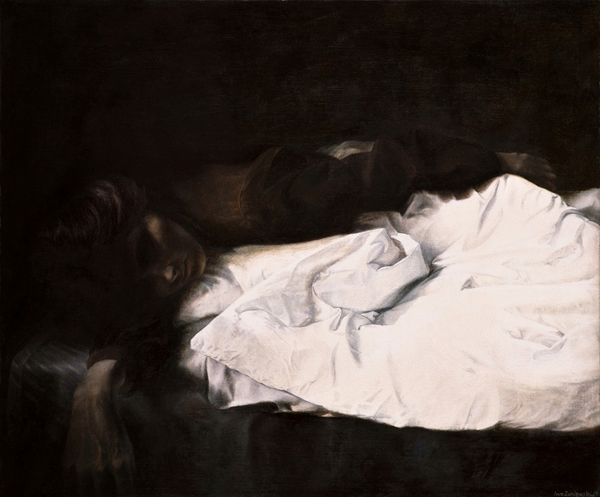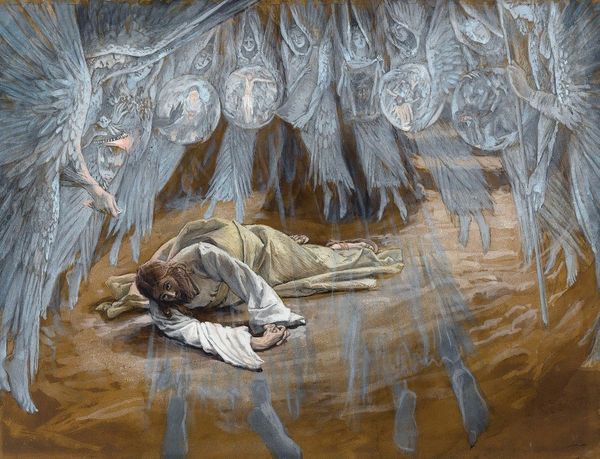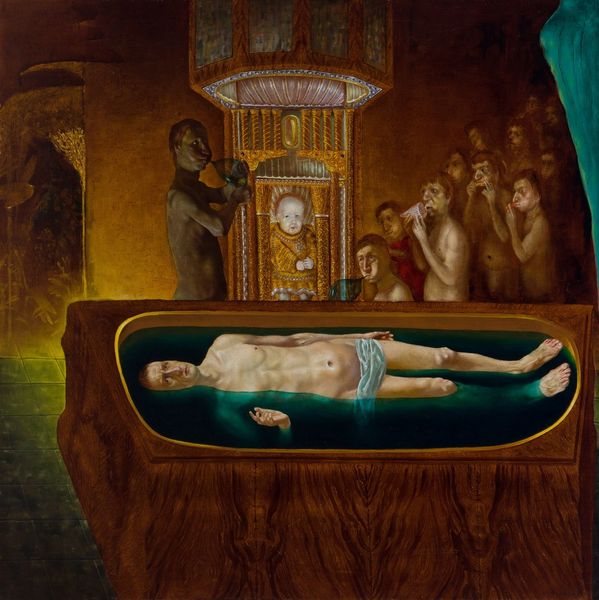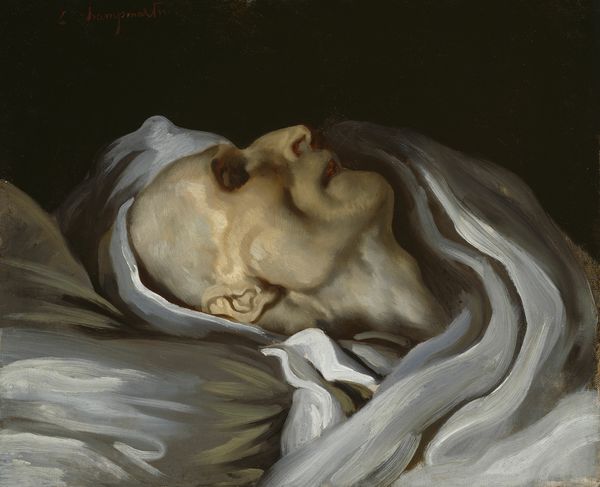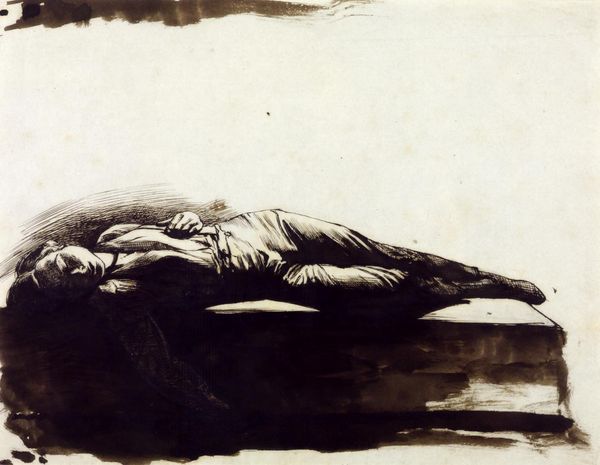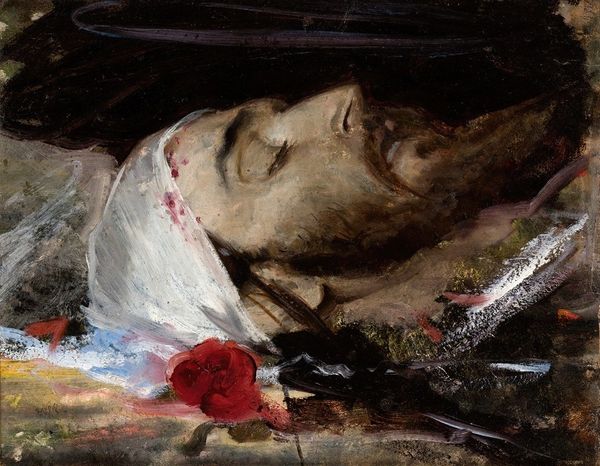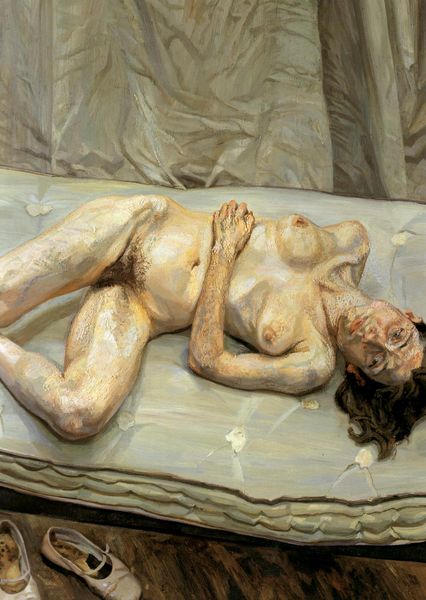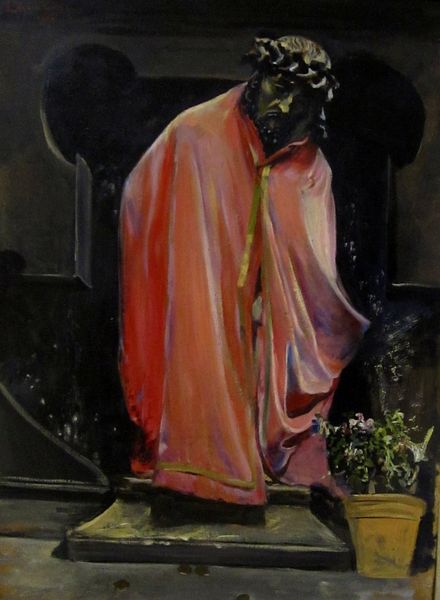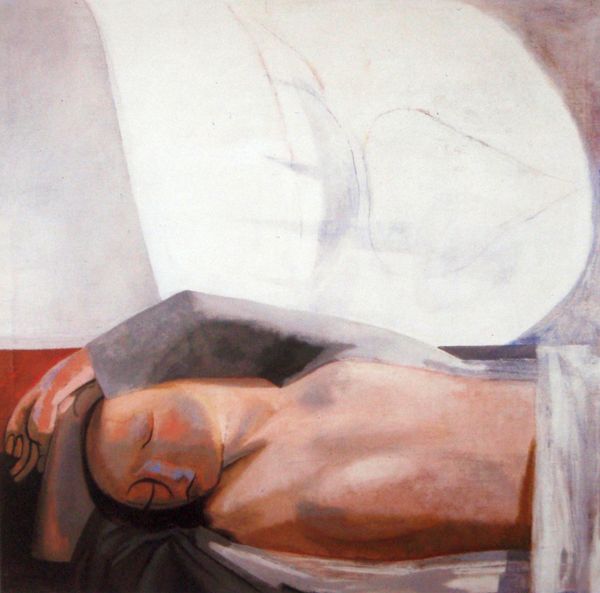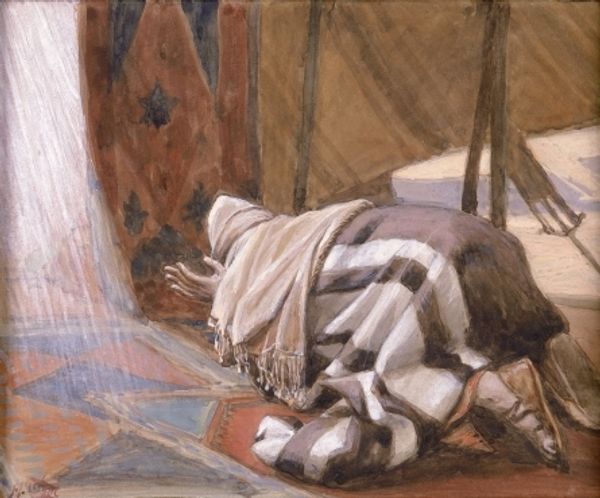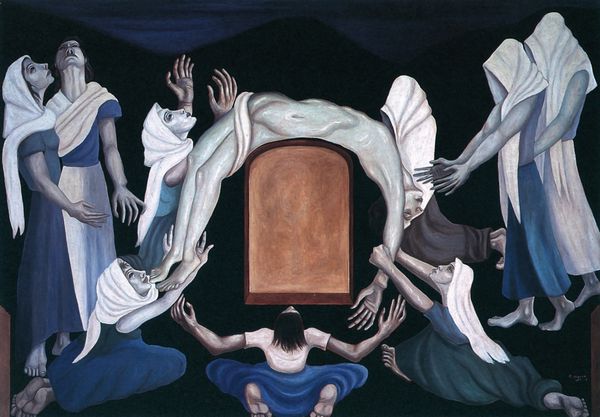
Copyright: Eric Fischl,Fair Use
Editor: Here we have Eric Fischl's "Beata Ludovica," painted in 1996, oil on canvas. It definitely has a dramatic, almost theatrical quality to it, don't you think? What strikes you most about this painting? Curator: The theatricality, absolutely! The dramatic lighting, that stark contrast… it’s practically operatic. It's like Fischl caught a saint mid-swoon, perhaps even during an ecstatic vision. Makes you wonder what she’s dreaming, doesn’t it? Maybe of a future filled with slightly burnt offerings, judging by the candles. Editor: I see what you mean. I almost feel like I am intruding on a private moment. Can you talk more about the use of light? It feels so deliberate. Curator: The light… ah, yes! Think Caravaggio meets a disco. Fischl masterfully uses chiaroscuro, that classic light-dark contrast, to highlight the Beata's serene face and flowing garments, creating a powerful sense of depth and drama. It's less about illuminating and more about shrouding in mystery, isn't it? Those flickering candles almost seem to be whispering secrets. Do you catch a sense of Baroque theatricality blended with the unease that marked the end of the 20th century? Editor: Definitely. So, beyond the technical aspects, what do you think Fischl is trying to say with this piece? Curator: That’s the million-dollar question, isn’t it? Is it reverence, critique, or a bit of both? Perhaps it's a meditation on the fleeting nature of life and the enduring power of faith... or maybe it is simply an excuse to paint beautiful white fabric bathed in eerie candlelight. I think he invites us to find our own truth in it. It really does feel so personal to each viewer. Editor: That makes a lot of sense. It's been fascinating to unpack all of those layers. Curator: Indeed! It’s a painting that keeps on giving, like a never-ending aria. And hopefully encourages us to light a few more candles under our own interpretations of life.
Comments
No comments
Be the first to comment and join the conversation on the ultimate creative platform.
